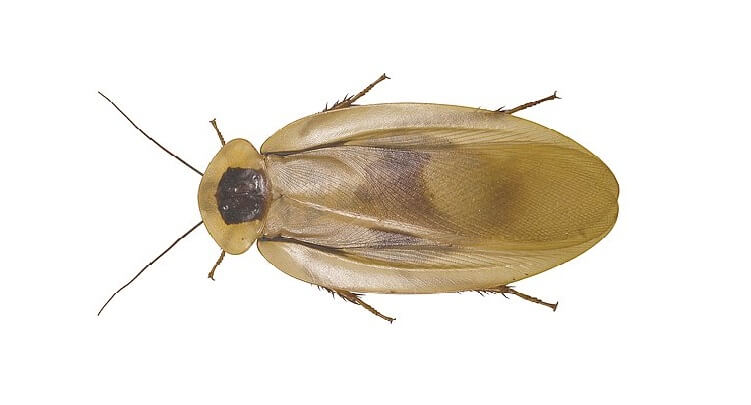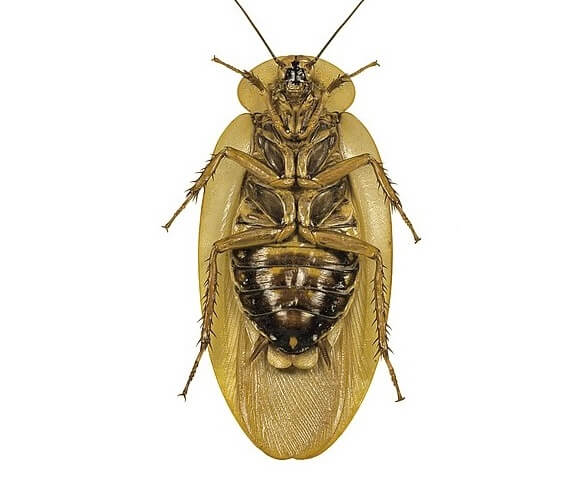Brazilian Cockroach With Image

Among these, the Central American giant cave cockroach, popularly known as the Brazilian cockroach (Blaberus giganteus), stands out for its astonishing size and intriguing life history.
Native to the tropical areas of the Neotropical realm, it is a testament to nature’s design prowess. Here, we shed light on this remarkable insect, shedding the shadows of apprehension that generally accompany its smaller kin.
Quick Overview
| Feature | Description |
|---|---|
| Size | Up to 10 cm (females) and 7.5 cm (males) |
| Habitat | Caves, rainforests, tree hollows |
| Distribution | Neotropics (Central and South America) |
| Diet | Decaying plants, seeds, fruits, bat guano, carrion |
| Reproduction | Hemimetabolous metamorphosis |
| Lifespan | Up to 20 months |
| Defense | Humoral response against fungal infections |
| Symbiotic Relationship | With Blattabacterium |
| Locomotion | Tripod gait |
| Respiratory System | Spiracles and tracheae |
| Hemolymph Components | Amino acids like alanine, glutamic acid, glycine, and histidine |
Physical Characteristics
The Brazilian cockroach boasts a flattened body, measuring up to 10 cm in females and 7.5 cm in males. With a wingspan of about 15 cm, these creatures possess a brown body adorned with black markings.
While both genders possess wings and cerci (paired appendages) at their rear end, only males feature tiny hair-like appendages known as style. Interestingly, heavier females tend to be less aerodynamic despite their flight capability.
Habitat & Distribution
These cockroaches are endemic to a wide range of regions in the Neotropics. Countries like Mexico, Brazil, Venezuela, and Guyana are some of their primary habitats. They prefer damp and dim environments, often found nestled in caves, tree hollows, or rock crevices.

Lifecycle & Diet
The Brazilian cockroach undergoes three life stages: egg, nymph, and adult. The progression from one stage to another is gradual, often influenced by environmental factors. Their dietary habits are mainly nocturnal, and they function as scavengers.
Primarily, herbivores feed on decaying plant materials, seeds, and fruits. However, they have also been known to consume bat guano and, occasionally, carrion. Their connection to bat roosts, both inside caves and tree hollows, can be considered an essential part of their ecosystem.
Mating Habits
Mating is a complex dance influenced by pheromones in these cockroaches. Females release a distinct sex pheromone to attract potential mates, while males produce an aphrodisiac hormone to encourage female mounting.
After successful mating, females remain pregnant for life, storing fertilized eggs inside a specialized case known as ootheca. These eggs hatch after about two months, with nymphs feeding on the ootheca for nourishment.
Defense Mechanisms
Like many insects, the Brazilian cockroach boasts a robust immune system to combat potential infections. Particularly against fungal infections, the cockroach releases specific proteins that fortify its defense.
Endosymbiosis & Locomotion
This cockroach engages in a symbiotic relationship with a type of bacteria called Blattabacterium, which helps recycle nitrogenous waste into usable amino acids.
Regarding movement, these roaches exhibit a unique tripod gait, allowing them to maneuver smoothly and rapidly across various terrains.
Respiration System
Breathing for these cockroaches occurs through spiracles and tracheae. Oxygen is directly delivered to cells, bypassing the need for a circulatory system like in mammals. In these roaches, hemolymph is the equivalent of insect blood. It is rich in various amino acids, pivotal in their physiology.
While cockroaches might not be everyone’s favorite creature, the Brazilian cockroach’s unique traits and significance in its ecosystem cannot be denied. These gentle giants of the insect world deserve our admiration and respect, reminding us of the myriad wonders of nature.

James E. Butkovich, Pest control maven with a knack for eco-friendly & Chemical solutions. Blogger with a mission to make homes pest-free, one post at a time.